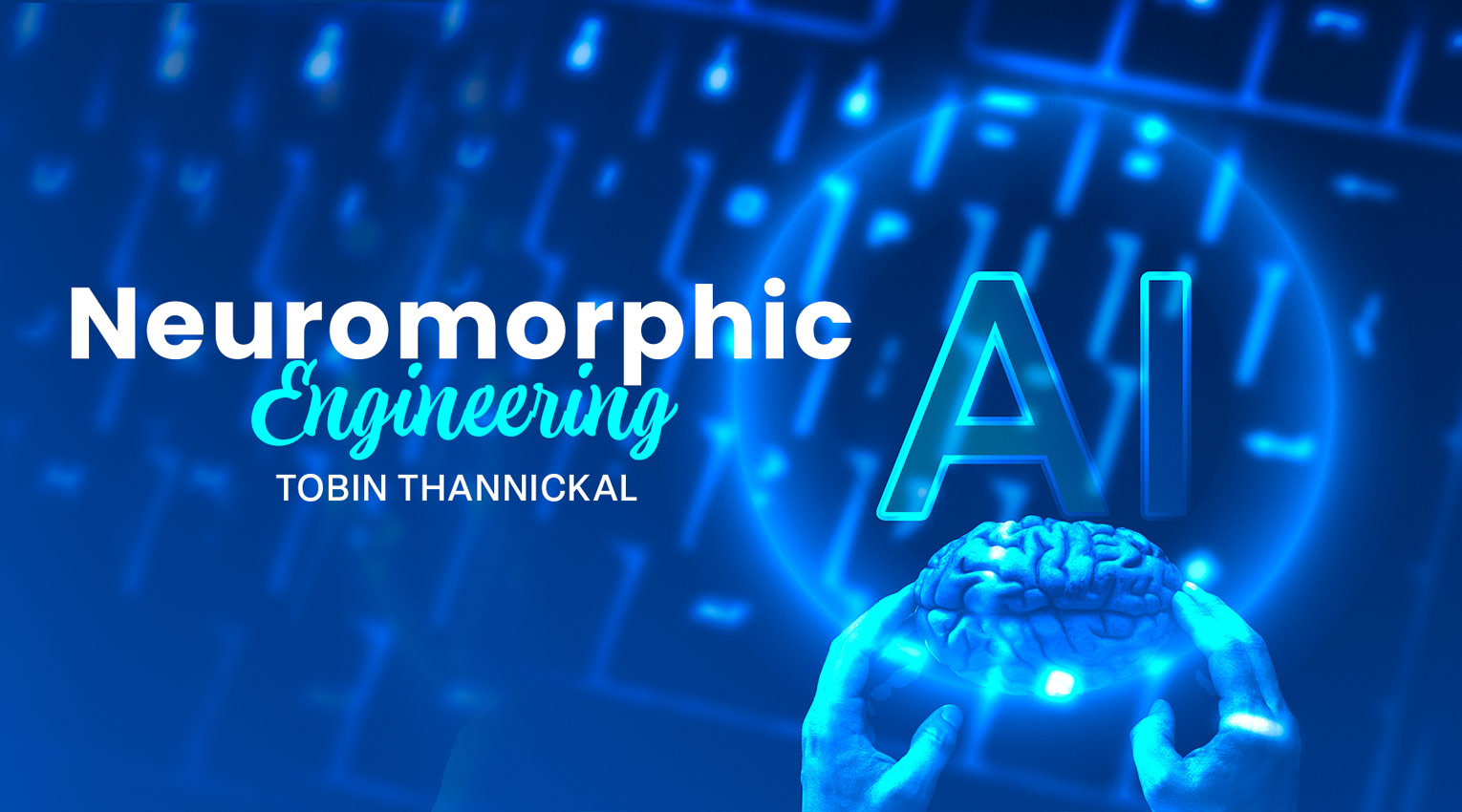Neuromorphic Engineering
Tobin Thannickal
Computers have become an integral part of all aspects of life. Conventional Von-Neumann computers do not possess the intrinsic capabilities to deal with complex data like the human brain. Significant research works have been done to develop computers inspired by the principles of human brain functions. The development of Neuromorphic Engineering is a newly emerging interdisciplinary field that takes inspiration from biology, physics, mathematics, computer science, and engineering to design hardware models of neural and sensory systems. The term “neuromorphic” was initially coined in the 1990s by Carver Mead to refer to mixed-signal analog/digital very large-scale integration computing systems that take inspiration from the neuro-biological architectures of the brain.
How does Neuromorphic Computing work?
Neuromorphic computing designs computers based on the systems found in the human brain and the nervous system. The working of neuromorphic computing-enabled devices start with the placement of Artificial Neural Networks (ANN) with millions of artificial neurons. The layers of these artificial neurons pass signals to one another. These electric spikes convert input into an output that results in the working of neuromorphic computing machines. The passing of electric spikes works based on Spiking Neural Networks (SNN). SSN architecture further enables an artificial machine to work like the human brain. By mimicking human brain functions, Neuromorphic Computing Machines work like a human brain and perform tasks efficiently and effectively.
Artificial Intelligence (AI) and Neuromorphic Computing
Artificial Intelligence (AI) technology intends to impart human abilities to computers to make them work like humans. Neuromorphic Computing focuses on engineering computers that work like the human brain. With millions of neurons that pass electric signals to one another, Neuromorphic Computing has become a revolutionary concept in AI. By enhancing information processing technology, Neuromorphic Computers have become the leaders of AI. Neuromorphic computing has advanced information processing and enabled computers to work with cutting-edge technology. The traditional computers could only support Artificial Intelligence.
Features of Neuromorphic Computers
- Digital neurons and synapses
- Analog signals
- Rapid response system
- Higher adaptability
- Fast-paced learning
- Mobile architecture
- Low consumption of power
Biological basis of Neuromorphic Engineering
Neurons and synapses are essential components of physiological signal transmission and processing. Neurons are connected through synapses to form a complex neural network. They are composed of soma, axon, and dendrites. Soma receives and integrates input information and transmits it. Dendrites receive impulses from other axons and transmit them to the soma. Axons receive and transmit external stimuli. Synapses are the sites where the functional connections occur between presynaptic and postsynaptic neurons. They enable neurons to transmit chemical or electrical signals to other neurons or targeted cells. Synapses change the strength of the connections with neurons in response to action potentials. This results in the modulation of neuronal behavior called neuroplasticity or synaptic plasticity. Synaptic plasticity with high fault tolerance, robustness, adaptability, and computational energy efficiency has become the biological basis of neuromorphic engineering, which is used in artificial neural networks (ANN).
The neuromorphic Computer system is in use.
- Intel – Loihi and Lava (131000 neurons and 130 million synapses).
- IBM – True North (64 million neurons and 16 billion synapses).
- SpiNNaker – used for “The Human Brain Project.” The largest neuromorphic supercomputer is designed and built to work with its landmark one-millionth processor core. It can complete more than 200 million actions per second, with each chip having 100 million transistors.
Reference
Dennis V Christensen et al., Roadmap on neuromorphic computing and engineering, Neuromorphic. Comput. Eng. 2 022501, 2022,





